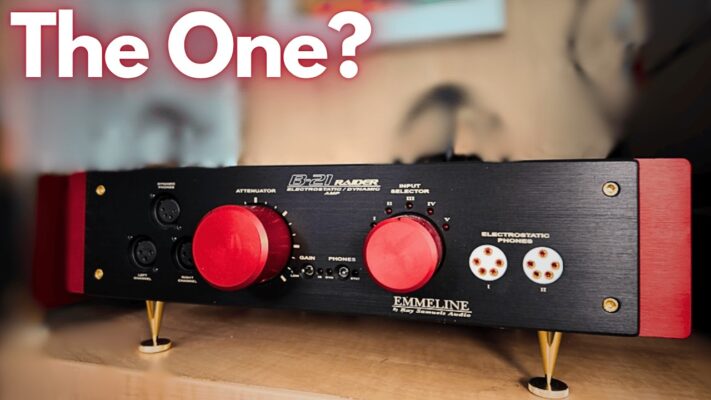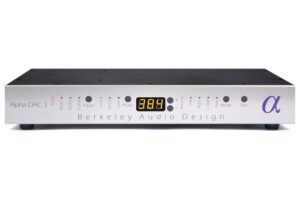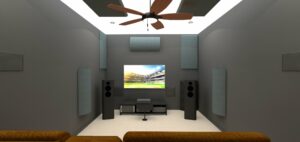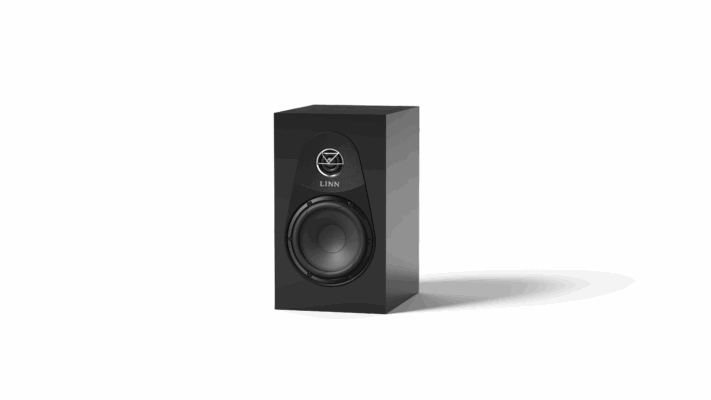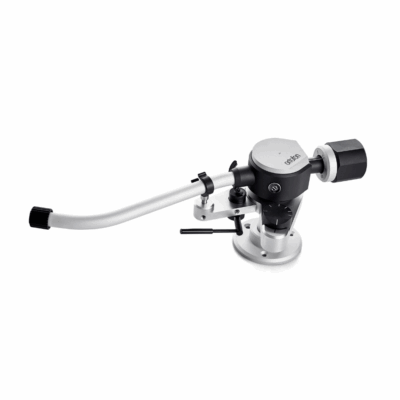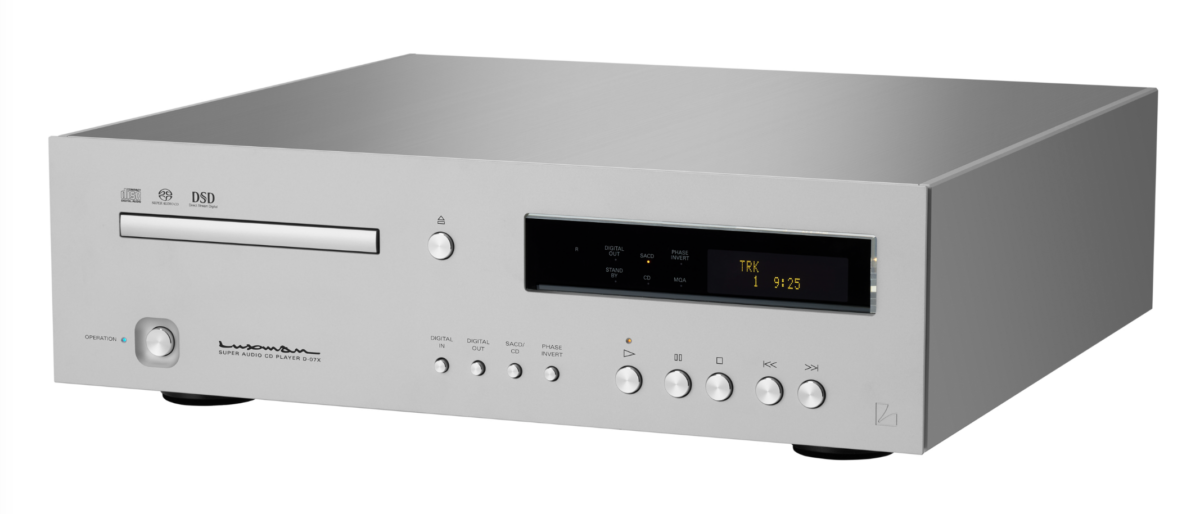
For over a decade my mantra has been to get grounded. No, I’m not talking about tamping down my boisterous personality, though room for improvement doubtless exists. I’m referring instead to my audio system, which features a passel of equipment that functions nice and quietly. In my first home, I went to some lengths to improve the ground, installing a separate, ionic earthing array, copper grounding rod for the subpanel that was tied to the main ground. The idea was to lower the noise floor in my audio system by reducing the ground resistance to as close to zero ohms as possible. Near as I could tell, it worked. In my current home, I encased several hundred feet of copper wire in the laundry room in a substance called bentonite and tied it to the main breaker panel. In addition, I installed a heavy-duty Equitech transformer to deliver balanced power to the dedicated outlets for my stereo.
Is there any further to go? My dream would be to obtain a separate transformer from the power company for my stereo, but that doesn’t appear to be happening any time soon. A more practical approach is to try and improve ground performance with audio equipment, and that is what a number of companies are trying to do. In the past several years, high-end companies, including Nordost, Shunyata, and Entreq have designed ground-control devices to lower hash and noise in audio equipment.
Here we consider Computer Audio Design, a British-based company that has begun to attract considerable attention for its ground-control products, beginning with the company’s launch of the GC1 at the 2016 Munich show. CAD has been in business since 2011, making DACs, servers, and USB cables. It was this development effort that led to the understanding of the problematic role of noise in an audio system and how to mitigate it. Computer Audio Design is headed by Scott Berry, who holds a degree in electrical engineering, and his vivacious wife Isabel Whitley. CAD, which was founded in 2011, offers a wide range of passive ground-control devices, ranging from the diminutive GC1.1, which has two 4mm banana sockets on its rear, to the mighty GC-R, which has eight. In each case, you run a wire from the CAD into an unused input of a piece of audio gear. The devices are simplicity themselves to use, as they are not plugged into a wall socket but purely passive in operation. Berry was eager for me to try both the GC1.1 and the GC-R, both of which I ran with separate wires to both earth and signal ground.
He explained that his interest in designing the ground controls stemmed from his earlier work in designing digital-to-analog converters. He was obsessed with reducing high-frequency noise, which he felt damaged the signal and prevented digital from attaining some of the attributes of analog recordings. The aim of his ground-control devices is to convert high-frequency noise into heat—another way of looking at it is that the box acts as a sink into which that noise is drained away. The aim is to separate signal from chassis earth ground. The company suggests separating ground controls on digital and analog devices, which is to say it recommends against mingling the two on a single CAD device.
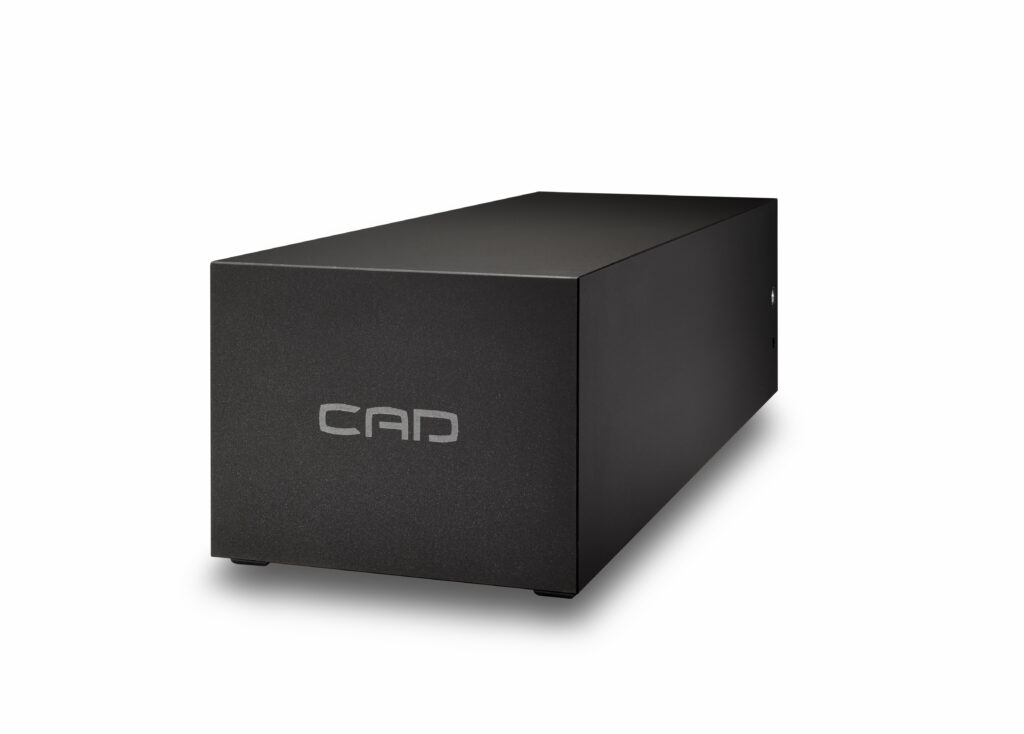
The intensely cerebral Berry is confident about his products, but not braggadocious. “You’re not going to get 100 percent effectiveness,” he said, “but the larger the device, the more effective it will be.” Like not a few manufacturers, he’s reluctant to divulge the details of his devices, other than to say that “we’ve gotten together some materials that are man-made. They’ve been modified and work in different frequency spectrums.” CAD has also put considerable work into the slender and fairly flexible cables that run from a piece of audio gear to its grounding device. “We try to get the voltage potential of the connected component to migrate down that cable,” Berry says. “We want the very same voltage potential that is in the unit to be inside the GC.”
Deploying the units in my system turned out to be a head-snapping experience. It wasn’t that the ground control units suddenly excavated lots of new detail or revealed hidden tonalities. Instead, it was the manner in which the overall presentation was audibly different and, in most ways, improved that captured my attention. My audio buddies who listened were riveted, as well. All of a sudden, Maurice Andre’s piccolo trumpet, for example, sounded even warmer and more golden.
What the heck was going on? Quite a bit, as it turned out. The most notable attributes were a richer tonality and blacker backgrounds, all of which I ascribed to a reduction in grain and hash. Let’s face it: The quieter the background, the more the music emerges from your loudspeakers rather than being hurled at you. On Prince Royce’s album Alter Ego, the CAD gear noticeably calmed down what was otherwise a frenetic proceeding. The same for the trumpeter Arturo Sandoval’s recordings, which rocket into the stratosphere almost the second he picks up a horn. Then there was James Blake’s album Friends That Break Your Heart. On songs such as “Famous Last Words” or “Say What You Will,” the plaintive character of his singing, the emotional depth, the sheer plangency came through even more forcefully. Nor was this all. The extra dollop of blackness that the CAD imparts seemed to widen the soundstage, creating an even more expansive vista than had previously emanated from the Wilson WAMM loudspeakers. This increased sense of spatiality helped situate the instruments more firmly in the soundstage.
Something similar happened when listening to classical piano recordings. The more sumptuous sound was all to the good, particularly on digital recordings, which can sometimes be plagued by an almost vestigial sense of steeliness. Recently, I’ve been streaming the legendary pianist Murray Perahia’s performance of the “Moonlight” sonata, a warhorse if there ever was one. But in Perahia’s hands, it takes on a new sense of drama, one that the CAD heightened with its ability to deliver a more pellucid sense of the individual lines that Perahia seeks to bring to the fore. In a sense, you could call it the Marie Kondo of high-end audio: the CAD declutters the music.
I hasten to add that I did not deploy the CAD solely on digital sources. I also wired up the mighty DS Audio Grand Master optical cartridge with a GC1.1 to see what would occur. Once more, I was pleased with the results. While I wouldn’t say that it was as significant as with digital sources, I did feel that on LPs such as Michael Jackson’s Thriller, it definitely helped to render the musical lines more intelligible, reducing any lingering sense of smear or stridency or aggressiveness in the treble region. It was—dare I say it?—a thrilling experience.
The one area where I felt the CAD devices left a more ambiguous imprint on the music was in the realm of dynamics. The velvety sound that it creates also appeared to mute some of the dynamic wallop that was otherwise present on a variety of recordings. Whether this amounts to a subliminal craving for some of the aggressiveness that distortion may create is something I can only speculate about. But in listening extensively to the CAD, I could not help feeling that something of a trade-off was taking place in this area—a smoother but less punchy overall sound.
If you’re a congenital skeptic, you’ll think that the whole grounding enterprise is a solution in search of a problem. But to my ears there was no gainsaying the remarkable benefits that the devices can confer. Even just plugging in a single GC1.1 on the digital end was remarkably effective. For anyone thinking about venturing into the realm of ground control, I would suggest trying a GC1 to see how you like it. The difference won’t be subtle. In my case, listening to the effect of the CAD devices prompted thoughts of David Bowie singing, “Ground Control to Major Tom/You’ve made the grade.” Upon inserting the CAD into your system, you may well feel the same way.
Specs & Pricing
GC1.1
Number of ground jacks: 2
Weight: 10.25 lbs.
Dimensions: 12.625″ x 4.37″ X 3.5″
Price $2250
GC-R
Number of ground jacks: 10
Weight: 110 lbs.
Dimensions: 18.5″ x 16″ x 9.25″
Price: $29,500
Standard Ground Control Cables: $350 each (56″ length) in RCA, male XLR, female XLR, BNC, USB, banana, 4mm spade, and RJ45. Custom termination and lengths are available on request.
Computer Audio Design (CAD)
(541) 728-3199
computeraudiodesign.com
Tags: ACCESSORIES GROUND CAD GROUNDING

By Jacob Heilbrunn
The trumpet has influenced my approach to high-end audio. Like not a few audiophiles, I want it all—coherence, definition, transparency, dynamics, and fine detail.
More articles from this editor









